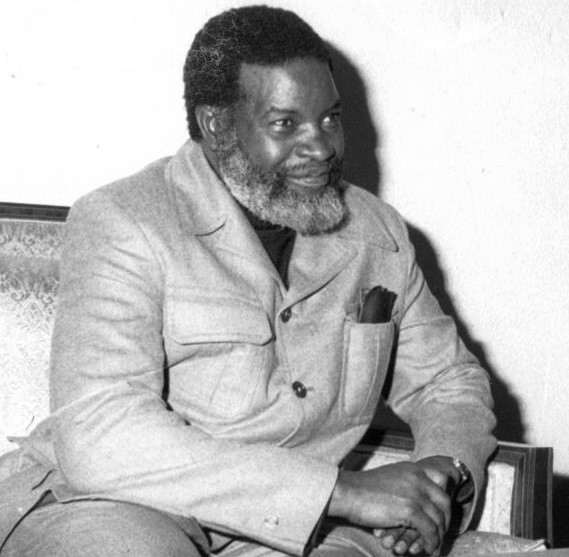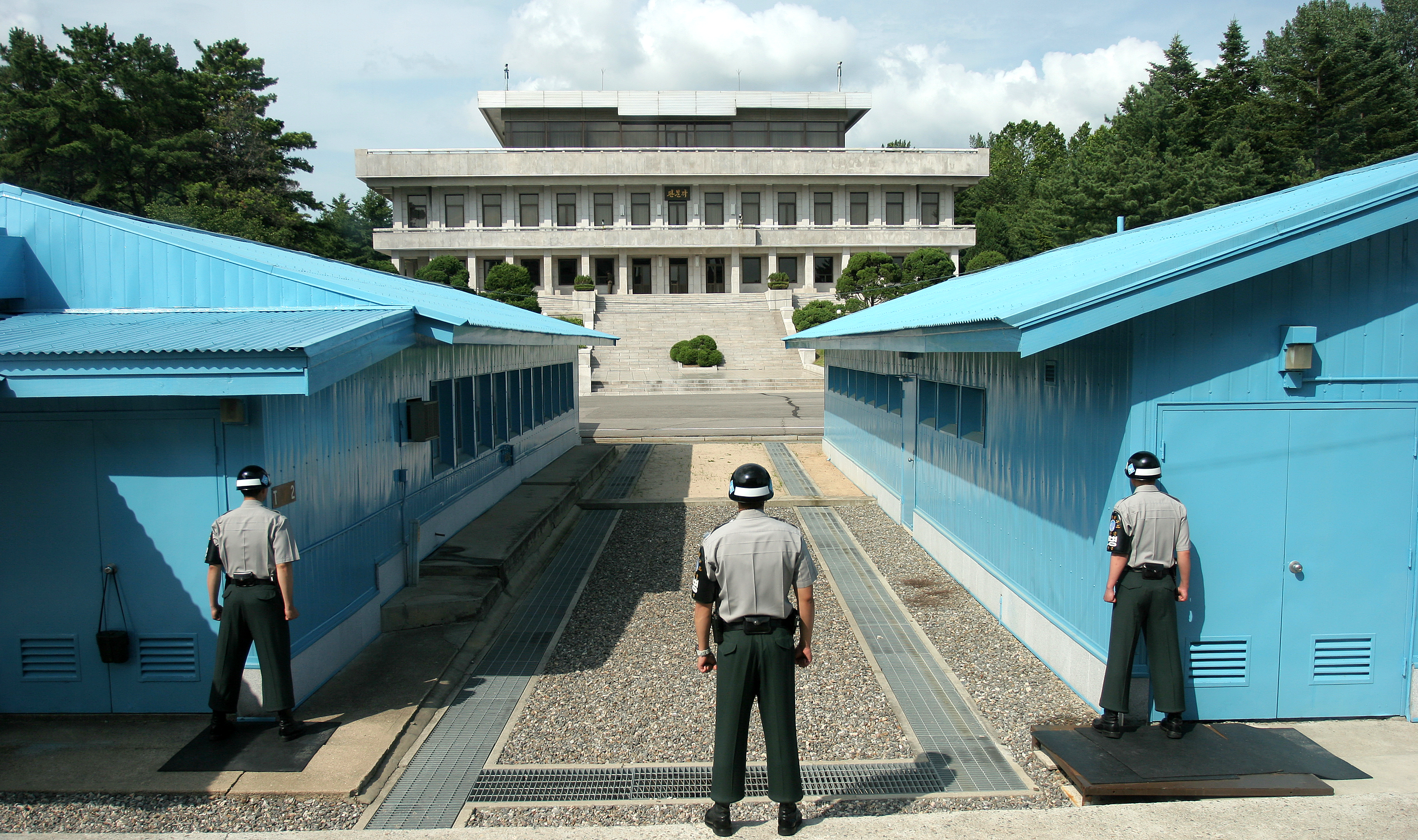|
Operation Displace
Operation Displace was a military operation by the South African Defence Force during the South African Border War and Angolan Civil War. It involved maintaining the illusion that the SADF had remained in brigade strength east of Cuito Cuanavale at the end of April 1988 and the eventual withdrawal of all South African military units from south-eastern Angola during August 1988. Background Following the end of fighting on 27 June 1988 around Techipa and Calueque, also known as Operation Excite/Hilti, an undeclared ceasefire came into being. The Americans under Chester Crocker, eager to prevent further fighting, negotiated a third round of talks in New York City to begin on 10 July. With Soviet assistance, the Cuban delegation returned with a less belligerent leader who proposed to the South Africans a Cuban withdrawal linked with the implementation of UN Resolution 435. This new concession came after seven years of rejecting that position. The talks ended on 13 July 1988, re ... [...More Info...] [...Related Items...] OR: [Wikipedia] [Google] [Baidu] |
South African Border War
The South African Border War, also known as the Namibian War of Independence, and sometimes denoted in South Africa as the Angolan Bush War, was a largely asymmetric conflict that occurred in Namibia (then South West Africa), Zambia, and Angola from 26 August 1966 to 21 March 1990. It was fought between the South African Defence Force (SADF) and the People's Liberation Army of Namibia (PLAN), an armed wing of the South West African People's Organisation (SWAPO). The South African Border War resulted in some of the largest battles on the African continent since World War II and was closely intertwined with the Angolan Civil War. Following several years of unsuccessful petitioning through the United Nations and the International Court of Justice for Namibian independence from South Africa, SWAPO formed the PLAN in 1962 with material assistance from the Soviet Union, China, and sympathetic African states such as Tanzania, Ghana, and Algeria. Fighting broke out between PLAN and ... [...More Info...] [...Related Items...] OR: [Wikipedia] [Google] [Baidu] |
32 Battalion (South Africa)
32 Battalion (sometimes nicknamed '' Buffalo Battalion'', ''Three-two battalion'' or pt, Os Terríveis for ''The Terrible Ones'') was a light infantry battalion of the South African Army founded in 1975, composed of black and white commissioned and enlisted personnel. It was disbanded on 26 March 1993. History Military refugees After the victory of the ''Movimento Popular de Libertação de Angola'' (MPLA) in the Angolan War of Independence in 1975, many troops of its main rival, the ''Frente Nacional de Libertação de Angola'' (National Liberation Front of Angola, FNLA), found refuge in the then South African-controlled South West Africa. Formation of Bravo Group From these troops, Colonel Jan Breytenbach together with Commandant Sybie van der Spuy formed a unit that was initially known as Bravo Group but later renamed 32 Battalion. Initially, Bravo Group consisted of two infantry companies, a mortar platoon, an anti-tank section and a machine gun platoon, but ... [...More Info...] [...Related Items...] OR: [Wikipedia] [Google] [Baidu] |
Conflicts In 1988
Conflict may refer to: Arts, entertainment, and media Films * ''Conflict'' (1921 film), an American silent film directed by Stuart Paton * ''Conflict'' (1936 film), an American boxing film starring John Wayne * ''Conflict'' (1937 film), a Swedish drama film directed by Per-Axel Branner * ''Conflict'' (1938 film), a French drama film directed by Léonide Moguy * ''Conflict'' (1945 film), an American suspense film starring Humphrey Bogart * ''Catholics: A Fable'' (1973 film), or ''The Conflict'', a film starring Martin Sheen * ''Judith'' (1966 film) or ''Conflict'', a film starring Sophia Loren * ''Samar'' (1999 film) or ''Conflict'', a 1999 Indian film by Shyam Benegal Games * ''Conflict'' (series), a 2002–2008 series of war games for the PS2, Xbox, and PC * ''Conflict'' (video game), a 1989 Nintendo Entertainment System war game * '' Conflict: Middle East Political Simulator'', a 1990 strategy computer game Literature and periodicals * ''Conflict'' (novel ... [...More Info...] [...Related Items...] OR: [Wikipedia] [Google] [Baidu] |
Battles And Operations Of The South African Border War
A battle is an occurrence of combat in warfare between opposing military units of any number or size. A war usually consists of multiple battles. In general, a battle is a military engagement that is well defined in duration, area, and force commitment. An engagement with only limited commitment between the forces and without decisive results is sometimes called a skirmish. The word "battle" can also be used infrequently to refer to an entire operational campaign, although this usage greatly diverges from its conventional or customary meaning. Generally, the word "battle" is used for such campaigns if referring to a protracted combat encounter in which either one or both of the combatants had the same methods, resources, and strategic objectives throughout the encounter. Some prominent examples of this would be the Battle of the Atlantic, Battle of Britain, and Battle of Stalingrad, all in World War II. Wars and military campaigns are guided by military strategy, whereas bat ... [...More Info...] [...Related Items...] OR: [Wikipedia] [Google] [Baidu] |
Cross-border Operations Of South Africa
Borders are generally defined as geographical boundaries, imposed either by features such as oceans and terrain, or by political entities such as governments, sovereign states, federated states, and other subnational entities. Political borders can be established through warfare, colonization, or mutual agreements between the political entities that reside in those areas. Some borders—such as most states' internal administrative borders, or inter-state borders within the Schengen Area—are open and completely unguarded. Most external political borders are partially or fully controlled, and may be crossed legally only at designated border checkpoints; adjacent border zones may also be controlled. For the purposes of border control, airports and seaports are also classed as borders. Most countries have some form of border control to regulate or limit the movement of people, animals, and goods into and out of the country. Under international law, each country is generally permitt ... [...More Info...] [...Related Items...] OR: [Wikipedia] [Google] [Baidu] |
Tripartite Accord (Angola)
The Agreement among the People's Republic of Angola, the Republic of Cuba, and the Republic of South Africa (also known as the Tripartite Accord, Three Powers Accord or New York Accords) granted independence to Namibia from South Africa and ended the direct involvement of foreign troops in the Angolan Civil War. The accords were signed on 22 December 1988 at the United Nations Headquarters in New York City by the Foreign Ministers of People's Republic of Angola ( Afonso Van-Dunem), Republic of Cuba ( Isidoro Malmierca Peoli) and Republic of South Africa ( Roelof F. Botha). Negotiations In 1981 Chester Crocker, U.S. assistant secretary of state for African affairs for newly elected United States President Ronald Reagan, had developed a linkage policy. It tied apartheid South Africa's agreement to relinquish control of Namibia, in line with United Nations Security Council Resolution 435, and to retreat from Angola, to Cuba's withdrawing its troops from Angola.Tvedten, In ... [...More Info...] [...Related Items...] OR: [Wikipedia] [Google] [Baidu] |
Rundu
Rundu is the capital and largest city of the Kavango-East Region in northern Namibia. It lies on the border with Angola on the banks of the Kavango River about above sea level. Rundu's population is growing rapidly. The 2001 census counted 36,964 inhabitants; and for the 2011 census it has climbed to 63,430. History In 1936, it became the seat of the local governor as it replaced Nkurenkuru as capital of the Kavango district. The town has since grown into a multilingual city of the Kavango region by then now is for Kavango East and only recently its official status was changed to that of a town. Since 1993, its St. Mary's Cathedral is the episcopal seat of the Roman Catholic Apostolic Vicariate of Rundu. Politics Rundu is governed by a town council that has seven seats. The 2015 local authority election was won by SWAPO which gained five seats (6,973 votes). One seat each went to the local Rundu Concerned Citizens Association (1,043 votes) and the All People's Party (APP ... [...More Info...] [...Related Items...] OR: [Wikipedia] [Google] [Baidu] |
Ruacana
Ruacana is a town in Omusati Region, northern Namibia and the district capital of the Ruacana electoral constituency. It is located on the border with Angola on the river Kunene. The town is known for the picturesque Ruacana Falls nearby, and for the Ruacana Power Station. The place normally receives an annual average rainfall of , although in the 2010/2011 rainy season were measured. The farm ''Etunda'' is situated near Ruacana. It is run as a government supported irrigation scheme and has been established in 1993. Half of the farm is commercial irrigation land, the other half is allocated to 82 small-scale farmers. ''Etunda'' cultivates maize, wheat, watermelons, bananas, and other produce. History Ruacana was developed around the Ruacana Hydroelectric Power Station, a major underground hydroelectric plant linked to the nearby dam across the border in Angola at Calueque. The dam and pumping station were bombed in a Cuban airstrike in 1988, during the Angolan Civil War. ... [...More Info...] [...Related Items...] OR: [Wikipedia] [Google] [Baidu] |
Mavinga
Mavinga is a town and municipality in Cuando Cubango Province in Angola. One of the three municipalities in Angola. Predominantly inhabited by the Mbunda and municipality had a population of 27,196 in 2014. It comprises the communes of Mavinga, Cunjamba/Dime, Cutuile and Luengue. See also *Mbunda language *Mbunda people The Vambunda (singular ''Kambunda'', adjective and language ''Mbunda'', ''Mbúùnda'' or ''Chimbúùnda'') are a Bantu people who, during the Bantu migrations, came from the north to south-eastern Angola and finally Barotseland, now part of Zam ... References Further reading * Populated places in Cuando Cubango Province Municipalities of Angola {{Angola-geo-stub ... [...More Info...] [...Related Items...] OR: [Wikipedia] [Google] [Baidu] |
82 Mechanised Brigade (South Africa)
82 Mechanised Brigade was a Formation of 8th South African Armoured Division, a combined arms force consisting of infantry, armour and artillery. History Establishment 82 Mech was established on 1 August 1974 as part of 8th South African Armoured Division, an armoured formation. By 1977, the Brigade comprised: *Two Mechanised Infantry Battalions: Regiment de la Rey and Regiment Groot Karoo *A Tank Regiment: Regiment President Steyn *A Armoured Car Regiment: Regiment Mooirivier *A Field Artillery Regiment: Regiment Potchefstroom University *A Field Engineer Squadron: 13 Field Engineer *A Signals Units: 82 Signals *A Maintenance Unit: 3 Maintenance Unit *A Field Workshop: 71 Field Workshop and *A Field Ambulance: Divisional Transfer In 1985, 82 Mechanised Brigade was transferred to 7 Division. South West Africa and Angola Operations As part of 7 Division, 82 Mech was primarily involved in: * Operation Packer During Operation Packer which succeeded Operation Hooper in Marc ... [...More Info...] [...Related Items...] OR: [Wikipedia] [Google] [Baidu] |
Operation Packer
Operation Packer was a military operation by the South African Defence Force (SADF) during the South African Border War and Angolan Civil War from March to April 1988. This operation forms part of what became known as the Battle of Cuito Cuanavale. Operation Packer was a continuation of Operation Hooper, using fresh troops and equipment. The Cubans' objective was still to secure the town of Cuito Cuanavale to the west of the river from capture. The SADF objective was once again to eliminate the remaining Angolan forces on the east side of the river, so as to ensure that the Angolans were no longer a threat to UNITA in the south-east. Although at the conclusion some Angolan units remained in positions east of the river, the Angolan advance against UNITA was permanently halted, and UNITA lived to fight on. The SADF never attempted to cross the river or to capture the town. Both sides again claimed victory. Background On the 29 February 1988, the SADF and UNITA launched a fourth ... [...More Info...] [...Related Items...] OR: [Wikipedia] [Google] [Baidu] |




